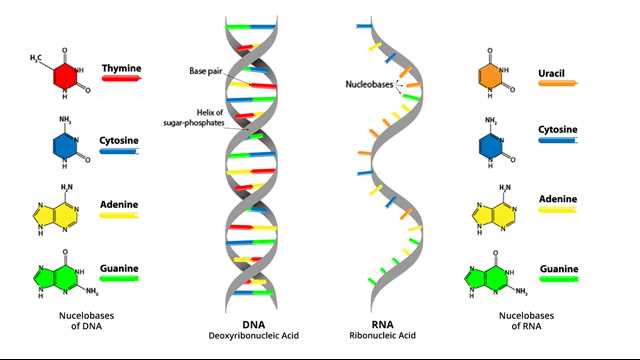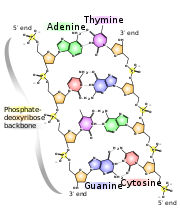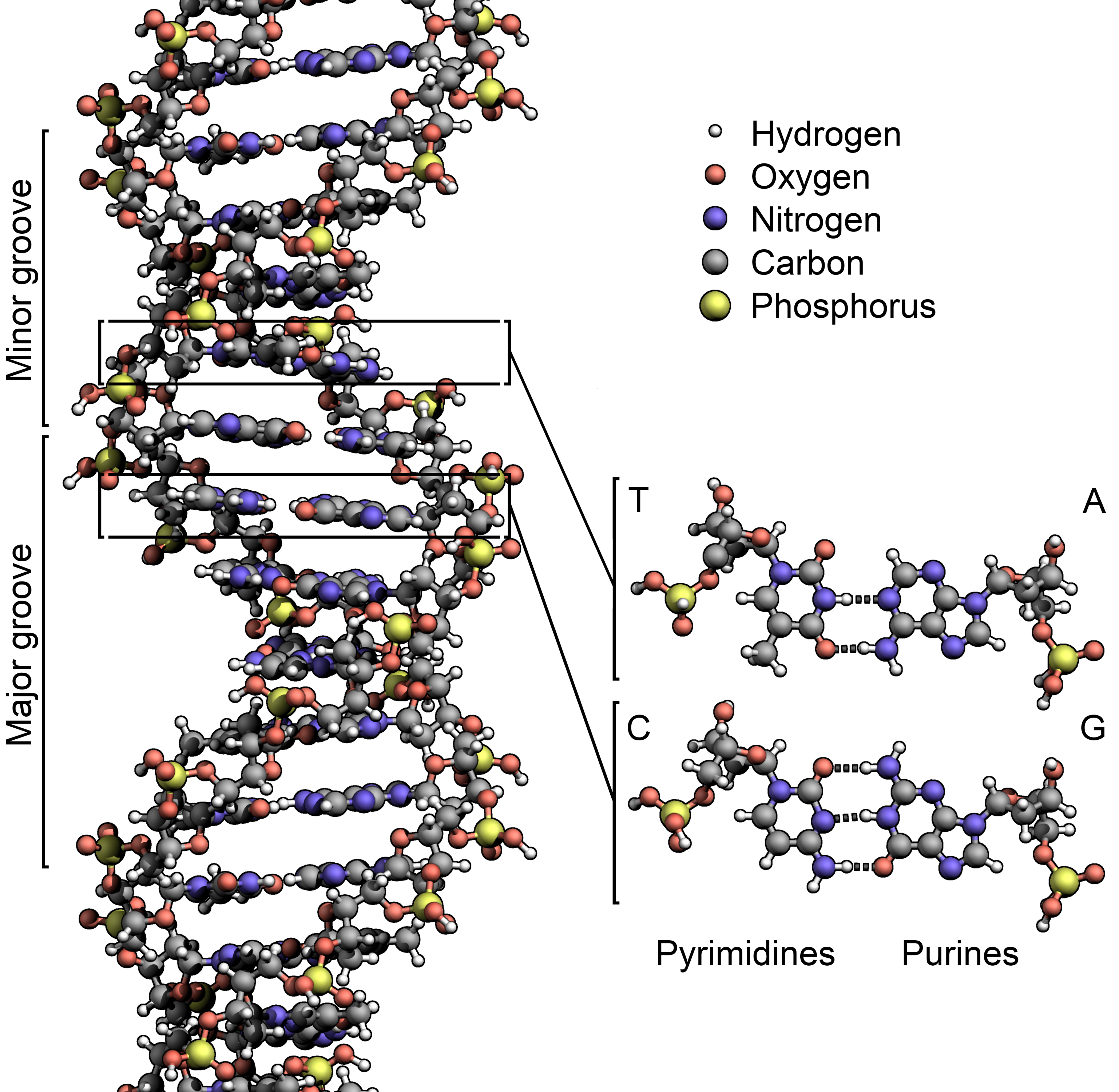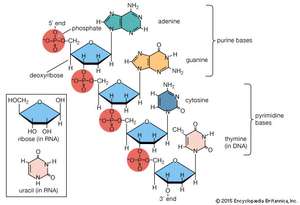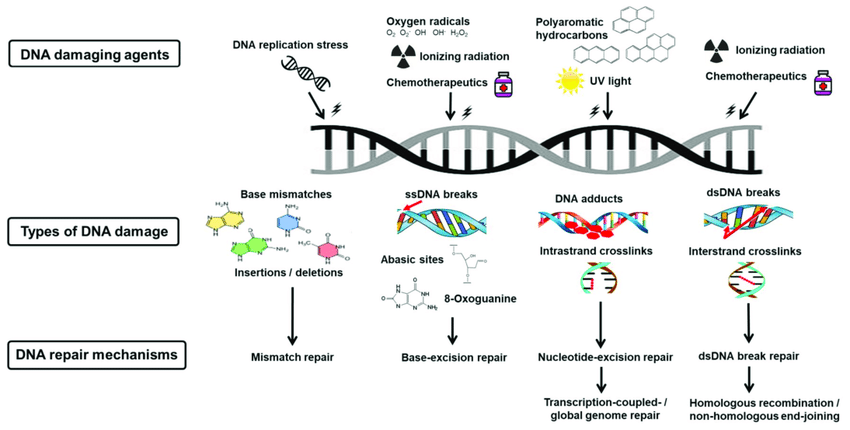
noun Genetics.
- DNA.
- Genetics. deoxyribonucleic acid: an extremely long macromolecule that is the main component of chromosomes and is the material that transfers genetic characteristics in all life forms, constructed of two nucleotide strands coiled around each other in a ladderlike arrangement with the sidepieces composed of alternating phosphate and deoxyribose units and the rungs composed of the purine and pyrimidine bases adenine, guanine, cytosine, and thymine: the genetic information of DNA is encoded in the sequence of the bases and is transcribed as the strands unwind and replicate.Compare base pair, gene, genetic code, RNA.
- the set of nongenetic traits, qualities, or features that characterize a person or thing: Humility is just not in her DNA.
noun
- the full name for DNA
noun
- deoxyribonucleic acid; a nucleic acid that is the main constituent of the chromosomes of all organisms (except some viruses). The DNA molecule consists of two polynucleotide chains in the form of a double helix, containing phosphate and the sugar deoxyribose and linked by hydrogen bonds between the complementary bases adenine and thymine or cytosine and guanine. DNA is self-replicating, plays a central role in protein synthesis, and is responsible for the transmission of hereditary characteristics from parents to offspringSee also genetic code
abbreviation for
- did not attend
1944, abbreviation of deoxyribonucleic acid (1931).
1931; see deoxyribose.
n.
- DNA.
n.
- Deoxyribonucleic acid; a nucleic acid that consists of two long chains of nucleotides twisted together into a double helix and joined by hydrogen bonds between complementary bases adenine and thymine or cytosine and guanine; it carries the cell’s genetic information and hereditary characteristics via its nucleotides and their sequence and is capable of self-replication and RNA synthesis.
- See DNA.
- Short for deoxyribonucleic acid. The nucleic acid that is the genetic material determining the makeup of all living cells and many viruses. It consists of two long strands of nucleotides linked together in a structure resembling a ladder twisted into a spiral. In eukaryotic cells, the DNA is contained in the nucleus (where it is bound to proteins known as histones) and in mitochondria and chloroplasts. In the presence of the enzyme DNA polymerase and appropriate nucleotides, DNA can replicate itself. DNA also serves as a template for the synthesis of RNA in the presence of RNA polymerase. Compare RNA. See Note at histone.
The molecule that carries genetic information in all living systems (see genetic code). The DNA molecule is formed in the shape of a double helix from a great number of smaller molecules (see nucleotides). The workings of the DNA molecule provide the most fundamental explanation of the laws of genetics.
DNA acts in three important way. First, when a cell divides, the DNA uncoils, and each strand creates a new partner from the surrounding material — a process called replication. The two cells that result from the cell division have the same DNA as the original (see mitosis). Second, in sexual reproduction, each parent contributes one of the two strands in the DNA of the offspring. Third, inside the cell, the DNA governs the production of proteins and other molecules essential to cell function.
 Liberal Dictionary English Dictionary
Liberal Dictionary English Dictionary
